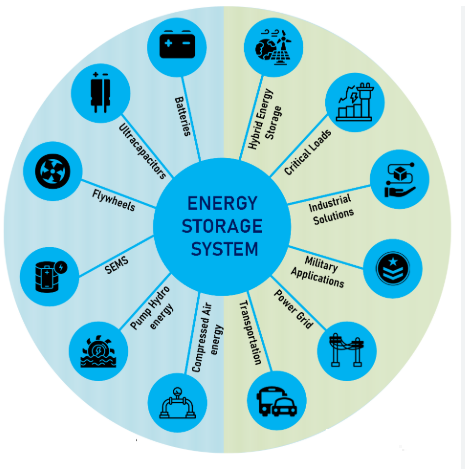Introduction
As EVs become mainstream, leading battery companies are adapting to a bigger vision. In a strategic move, GM and Redwood Energy have expanded their partnership to shift focus toward grid-scale energy storage systems—a segment vital for powering everything from homes to national energy grids.
This shift could redefine how battery companies tech supports both electric mobility and sustainable energy infrastructure in North America.
In a bold move that signals a dramatic shift in the battery industry, GM and Redwood Materials are doubling down on energy storage systems, marking a pivotal moment as battery companies pivot from EV production to scalable energy solutions.
GM & Redwood: Strengthening Their Ties
General Motors (GM) has been steadily enhancing its relationship with Redwood Energy, a California-based battery recycling and storage firm founded by Tesla co-founder JB Straubel. Their expanded partnership aims to:
- Develop advanced battery storage systems
- Reduce supply chain dependency on foreign materials
- Scale sustainable energy storage solutions
This comes as more battery companies realize that the next energy frontier isn’t just electric vehicles (EVs)—it’s long-duration battery storage that powers homes, businesses, and even grid-level systems.
Why the Pivot to Energy Storage?
Several key reasons are fueling this transition:
- Slower EV sales growth in Q2 2025
- Federal and state incentives shifting toward renewable energy infrastructure
- An urgent need for grid resilience during power outages and natural disasters
- Economic viability of second-life batteries
Global and Environmental Impact
Redwood’s recycling and repurposing operations can reduce CO2 emissions by up to 70% compared to traditional battery production. This sustainable model addresses:
- Battery waste concerns
- Critical mineral scarcity
- Pressure to meet net-zero climate goals by 2050
Market Potential and Growth
According to BloombergNEF, the global energy storage market could reach $620 billion by 2040. GM and Redwood are positioning themselves at the forefront of this multibillion-dollar opportunity.
Technology at the Core
Redwood brings to the table:
- Closed-loop recycling systems
- Patented methods for extracting lithium, nickel, cobalt
- Scalable battery pack production for residential and industrial use
GM provides access to:
- EV supply chain infrastructure
- Battery pack expertise
- Nationwide service and logistics capabilities
Challenges Still Ahead
- Supply chain volatility for raw materials
- Regulatory hurdles for large-scale installations
- Public awareness and education
- Need for standardized storage interfaces
Key Takeaways
- GM and Redwood are reshaping the battery Companies beyond just EVs.
- The focus is now shifting to stationary, scalable energy storage.
- Their expanded partnership could define how Americans power their homes and cities in the near future.
Why GM and Redwood Are Doubling Down
Redwood Materials, founded by Tesla co-founder JB Straubel, is known for battery recycling and circular supply chains. General Motors (GM), meanwhile, has been investing heavily in its Ultium battery platform.
Their renewed collaboration now involves not just EV battery materials but also stationary energy storage applications—which includes battery packs used to store solar or wind energy for use during peak hours or outages.
Passive voice usage: “New systems are being designed by Redwood to serve both EVs and energy grids.”
What’s Driving the Pivot to Energy Storage?
The decision to expand into energy storage systems (ESS) is being driven by several major trends:
- Increased renewable energy generation (solar/wind needs storage)
- Grid instability due to heatwaves and outages
- EV battery demand plateauing in some regions
- Government incentives through the U.S. Inflation Reduction Act (IRA)
By targeting this high-potential market, the GM Redwood Energy partnership is positioning itself for long-term sustainability and profitability.
5 Big Impacts of the GM Redwood Energy Partnership
1. Strengthened North American Battery Supply Chain
More raw and recycled materials are being sourced locally. This reduces dependency on overseas mining and cuts emissions from shipping.
2. Affordable Energy Storage for Homes and Utilities
With Redwood’s recycling tech and GM’s scale, cost-effective grid batteries can be developed, helping utilities and homeowners alike.
3. Second Life for EV Batteries
Used EV batteries are being repurposed into energy storage systems. This extends their usefulness by another 5–10 years.
4. Job Growth in Clean Energy Manufacturing
New ESS production lines in Nevada and Michigan are expected to create hundreds of green jobs, especially in underserved regions.
5. Acceleration of the Clean Energy Transition
Energy storage enables 100% renewable energy systems by bridging generation gaps. This partnership will help utilities decarbonize faster.
Implications for the EV and Grid Sectors
The partnership goes beyond immediate profits—it rewires the foundation of energy and mobility in the U.S.
- EVs and home energy systems could be integrated through vehicle-to-grid (V2G) tech
- GM vehicles may serve as both transportation and mobile power sources
- Utility-scale projects using recycled materials from Redwood lower infrastructure costs
This strategy reflects a shift from short-term EV focus to long-term energy sovereignty.
Frequently Asked Questions (FAQs)
Q1: What is the GM Redwood Energy partnership focused on now?
It has expanded to include stationary energy storage systems, beyond just EV battery supply chains.
Q2: Why is energy storage important?
It enables reliable power delivery from renewable sources and supports grid stability during demand spikes or outages.
Q3: Will this affect GM’s EV plans?
No, it complements them. The same battery technology is being scaled for both mobility and home/grid use.
Q4: Is Redwood using recycled materials?
Yes, Redwood is a leader in battery recycling, creating sustainable supply chains from old devices and vehicles.
Q5: Are there job creation benefits from this expansion?
Absolutely. New factories in Nevada and Michigan are expected to hire skilled labor in the clean tech sector.
Conclusion
The GM Redwood Energy partnership marks a pivotal moment in the evolution of battery tech. From powering EVs to enabling 24/7 clean energy grids, this alliance is helping shape a smarter, greener energy future.
By leveraging innovation, recycling, and supply chain localization, GM and Redwood are turning batteries into the backbone of tomorrow’s energy economy.

